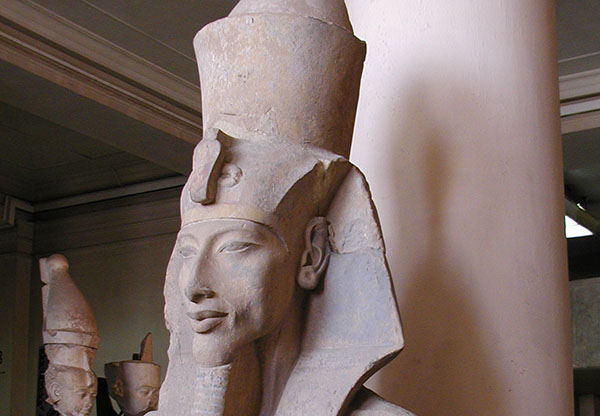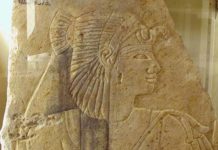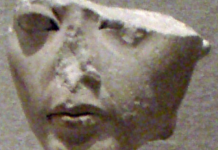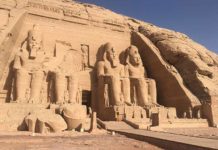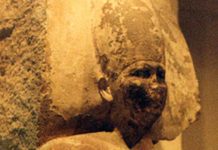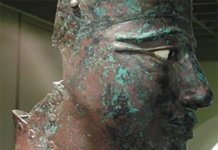This Pharaoh of the 18th Dynasty had a brief reign from 1353 – 1336 BCE. It appears that he may have suffered from Froelich’s syndrome or Marfan’s syndrome.
Akhenaten (aka Amenhotep IV) was the father of Tutankhamun and the husband of Queen Nefertiti, but his major claims to fame were invested in his efforts to reform the ancient Egyptian religion to monotheism and the unusual Armarna Egyptian art style that appeared only during his reign.
Amenhotep IV’s Religion
During his reign, Amenhotep IV announced that there was only one god in the cosmos and that was the sun disk or “Aten.” About 5 years later, he changed his name to Akhenaten and built a new capitol city at Armarna which he named after himself.
Soon he declared to his subjects that they couldn’t worship the Aten directly but must worship the Pharaoh who would act as an intermediary between the people and their god. Akhenaten served as the masculine aspect of the Aten while Queen Nefertiti represented the female aspect.
Art Depicting Amenhotep IV
The unusual art is the clue to the Pharaoh’s possible disease. It is totally unlike any previous Egyptian art before his reign or afterward.
Sculptures and paintings show the Pharaoh with a long, slender neck, a long face with a sharp chin, narrow, almond-shaped eyes and full lips. He had long arms and fingers, round thighs and buttocks, a soft pot-belly and enlarged breasts.
There has been much debate on whether this is a new art form or an accurate depiction of physical deformities.
Froehlich’s Syndrome
This deformity might have had its origins in an endocrine disorder called Froelich’s syndrome. The disorder appears in males as an elongated face and an androgynous body type. It also interrupts sexual development and presents severe learning difficulties, impotency and obesity.
However, history reveals that no learning disability was evident with Akhenaten and he did sire several children, Tutankhamun among them. This indicates that Froelich’s syndrome might not have been the problem.
Marfan’s Syndrome
Some researchers have suggested that the Pharaoh suffered from Marfan’s syndrome, which is also a disfiguring condition. It’s a genetic condition which affects patients with long fingers, skeletal abnormalities, and spinal defects and does not produce any learning disabilities in the patient. Since Akhenaten’s mummy had never been found, there has been no way to definitely determine the cause of his deformities. The length of his life span was also in line with the life expectancy of a Marfan’s patient.
Marfan’s Syndrome appears to be the most likely candidate disease for Akhenaten’s appearance. Other members of his family showed some of the same features which suggests that it was indeed a genetic disorder.
Other historical characters who might have been afflicted with Marfan’s syndrome are Sergie Rachmaninoff, Niccolo Paginini, Mary Queen of Scots, Flo Hyman, and possibly Abraham Lincoln.
Source:
- Akhenaten and the Religion of Light by Erik Hornung; Cornell University Press, 2001


